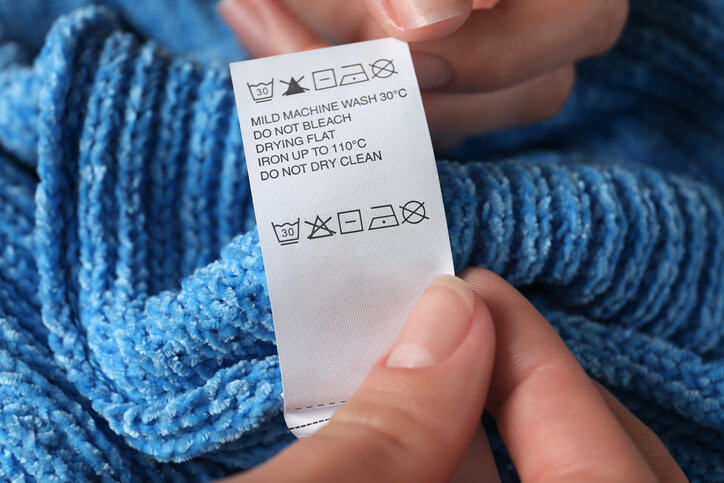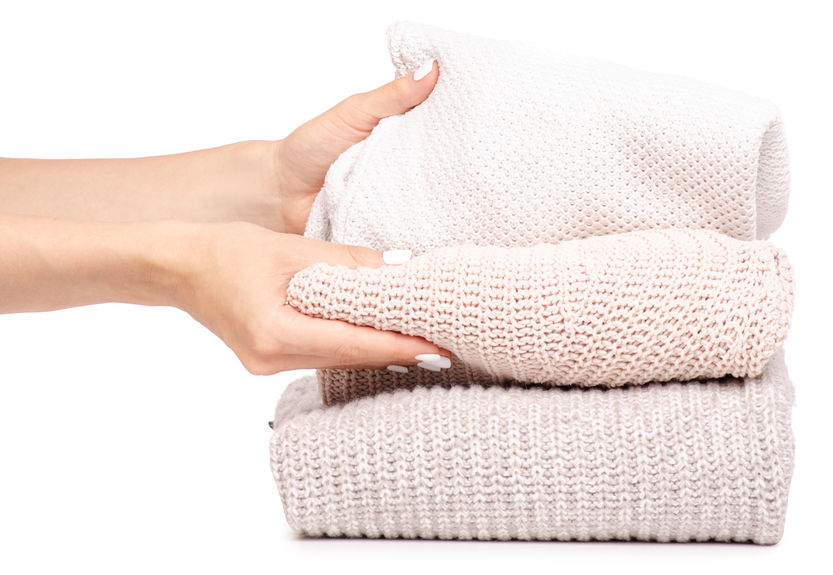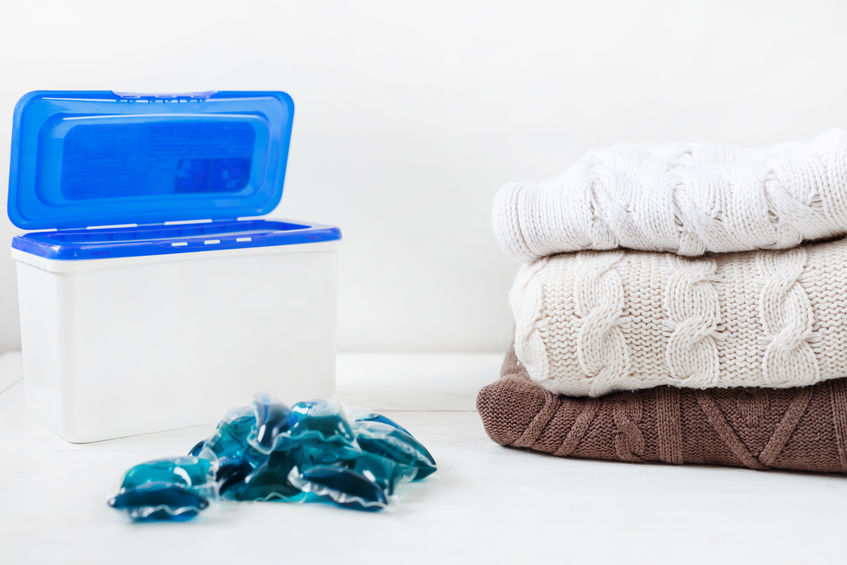- Clean Home
- Laundry Stain Removal Guide
- How To Machine Wash Sweaters
How to Machine Wash Sweaters
How to machine wash sweaters safely. Santa was good this year and brought you a bunch of new, fuzzy, warm sweaters.
They've been worn a few times and need a date with the washing machine. But you hold back, not wanting to lose that new look and feel. You actually have the power to maintain that fresh look and feel through machine washing.
A caveat: just because dry cleaning is expensive does not mean that it's the best care for all sweaters. The chemicals used in dry cleaning can build up on some fibers and leave them stiff.
Probably not the look you're going for. Not to worry—you can machine wash sweaters safely. These guidelines can help.
Start by Reading the Care Label
Before you machine wash sweaters, always read the care label first. Then, follow the instructions carefully.
If the label says, "Dry Clean Only," dry clean it. However, if the label says "Dry Clean," you may be able to wash it.
Sweaters are more challenging to care for than most garments. This is why many of us are reluctant to machine wash sweaters.
After all, they can shrink, stretch, and even pill. And the softer the sweater, the more delicate.
Fear no more. The key to sweater washing success is knowing how to machine wash sweaters by fabric type. These fabric guidelines can help ensure wash-day success.
How To Machine Wash Sweaters by Fabric Type
- Acrylic: Acrylics are manufactured fibers that can stretch when subjected to heat. Wash as directed on the label (usually in warm water). After you machine wash sweaters, acrylics should be air dried on a flat surface, or tumbled dry on low heat. The care label will detail which is preferable. If you have to iron a sweater, iron it inside out, on low heat, and be careful not to stretch it as you press out any wrinkling.
- Angora: Angora sweaters are a blend of rabbit hair and synthetic fibers. It's very prone to shrinking, so this is one you should consider dry cleaning. If the label says it can be washed, don't put it in the machine. Instead, hand wash it in a delicate fabric wash such as Woolite and lay it flat to dry.
- Cashmere: Cashmere is usually goat hair blended with wool or synthetic fibers. Again, go by the label instructions. Usually, you can wash cashmere on a delicate cycle in cold water. Roll it in a towel to squeeze out excess water after washing, reshape it, and flat dry it away from sunlight or direct heat.
- Chenille: If you want chenille sweaters to stay soft, don't put them in the washing machine - even if the label says it's OK. The rubbing caused by the machine agitation can damage the fibers, making them snag or feel rough. Instead, wash inside out by hand and lay flat to dry.
- Cotton: Usually you can hand or machine wash cotton sweaters in cold water. Lay flat to dry. It may need ironing. If so, iron while damp.
- Silk: Some silk sweaters can be washed in the delicate cycle in cold water and flat dried. But it may need ironing afterward. If so, use a cool iron setting.
- Wool: Some wool sweaters can be washed; others cannot. Check the label. If you put it in the washing machine, use the gentlest cycle and wash it in cold water. Don't twist. Lay flat to dry. Also, not all wools are alike. Shetland and Merino wools can often be washed in cold water on the most delicate cycle. Agitation can cause them to shrink.
How To Machine Wash Sweaters and Safely Dry Them
Machine Washing: Always turn sweaters inside out to reduce pilling. Wash in extra-large mesh bags. If handwashing, remove excess moisture by rolling the sweater in a towel.
Machine drying: If you do put your sweater in the dryer, dry on low heat and remove it when it's almost dry and let it finish drying flat on a sweater drying rack.
Flat drying: Place the sweater on a rack and reshape as much as possible. Do not dry near heat or in direct sunlight.
Check it occasionally to make sure it's not shrinking as it dries. If it does, pull it back out to its original size. (Mark the outline on your rack with a tape.) Then follow these guidelines for unshrinking a sweater.
Storage: Never put away a sweater dirty as this makes it more attractive to pests. Also, some stains may set. Fold to store; do not hang.
How to Machine Wash Sweaters and Prevent Prevent Pilling
Sweater pills are the result of small fibers shed in the wash process that ball up and cling to the sweater's surface.
To prevent pilling, wash sweaters inside out to limit abrasion on the "good" side of the sweater fabric. If hand-washing, remove excess moisture by rolling the sweater in a towel.
Finally, to make your sweaters last longer, air them out at least 24 hours after you wear them (and before you wear them again). Then wash, fold, and store out of direct sunlight.
- Clean Home
- Laundry Stain Removal Guide
- How To Machine Wash Sweaters










